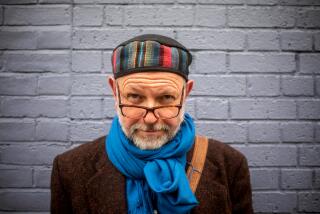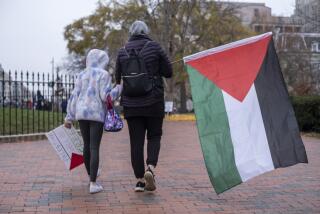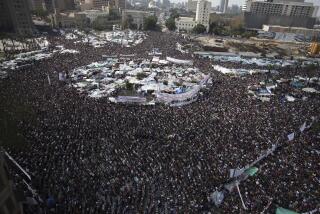Wendell Steavensonâs book âCircling the Squareâ charges into Egyptâs turmoil
The way she writes about the Egyptian revolution, itâs as if Wendell Steavenson fell in love all at once with a people, a place and a moment in time.
âI would wake up in the morning and the protests on Tahrir were waking too, rising from their flower beds, shaking themselves anew and wondering too: what would this new day bring? Every day we had no idea what would happen, every day seesawed between joy and death.â
It was not, as they say, Stevensonâs first rodeo. The New Yorker staff writer has reported from conflicts in Iraq, Afghanistan and Lebanon. She knows how to work with translators, how to balance the needs of getting the story and staying safe â how to be a war correspondent. But something about Egypt was different.
Summer books: Fiction | Page-turners | Nonfiction | Kids | Lifestyle | Audio
âAs a journalist youâre supposed to be entirely impartial, but I admit that I wanted some of the hopes and expectations of the revolution to be fulfilled,â she explains by Skype from a flat in Paris. âI was completely charmed and beguiled and excited and partisan about the revolution, particularly those 18 days on Tahrir and the spirit of them, the kind of hopefulness and excitement and [the notion that] we can live in a better, fairer society. That was all very powerful and I think quite real, it just wasnât able to be realized.â
Steavenson brings the energy and optimism of those early days to her book âCircling the Square: Stories from the Egyptian Revolutionâ (Ecco: $26.99, July). In vignettes that are sometimes as impressionistic as they are journalistic, she creates a vibrant sense of being on the ground in Cairo, a city of 7 million with the army an unpredictable force at a juncture of tremendous upheaval.
âWhat was most important to me was to put the reader into the middle of the action as much as possible, so that what you were looking at was inherent to that moment,â Steavenson says. âThere are definitely moments where I pull back and add a bit of hindsight, but I wanted to give a sense of the confusion, of the inchoateness of it all ... allowing events to be as unclear and unfocused and weird and surprising and violent and scary as they were at the time.â
Born and raised in England, Steavenson feels the tug of her American motherâs roots and traditions â she jokes that she always wants to eat at 6:30 p.m., several hours before acceptable European dinner time. Sheâs living in France and working on a project about Charlie Hebdo, after spending a year as a Nieman fellow at Harvard.
âI sound very English, but when people say, âWhat are you?,â itâs hard for me to nail my colors to one side of the Atlantic or the other,â she says. âI feel pretty mixed.â
That personal history of living across national boundaries set the stage for her international journalism. Steavenson, now 44, first went to the University of Cambridge in England, then moved to New York and wrote for Time, then returned to London to write for Time there. But she wanted to go even further.
âI quit in 1998 and went to live in Tbilisi in Georgia, which made no sense to anybody and which I couldnât quite explain,â she says. Fascinated by the dissolution of the U.S.S.R. â sheâd driven around the Balkans the summer after the Berlin Wall fell â Stevenson felt too green to go to Moscow, where established journalists were getting big stories. âI sat in Tbilisi where there was no news at all, nor electricity, nor heat, and I wrote stories of people around me and friends. At first I tried to write short stories and fiction, then I realized I couldnât do it as well as I wanted to. So I started writing nonfiction, and that was my first book.â
âStories I Stoleâ (2002) proved that Steavenson had a knack for finding tales in places where others didnât see them. It was the start of an impressive journalistic portfolio. Now when somethingâs happening, sheâs the established journalist who wants to get on the big story.
When the first protests started on Tahrir Square, Steavenson saw them on TV, like everybody else. âI was in Jerusalem, it was next door,â she says. âI was like, âIâve got to get on a plane.ââ
More to Read
Sign up for our Book Club newsletter
Get the latest news, events and more from the Los Angeles Times Book Club, and help us get L.A. reading and talking.
You may occasionally receive promotional content from the Los Angeles Times.









